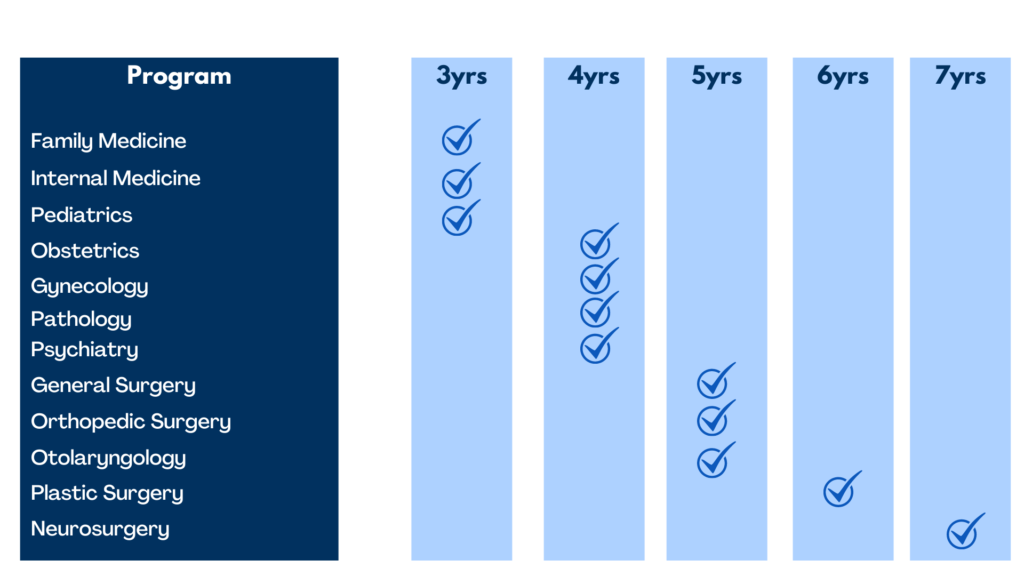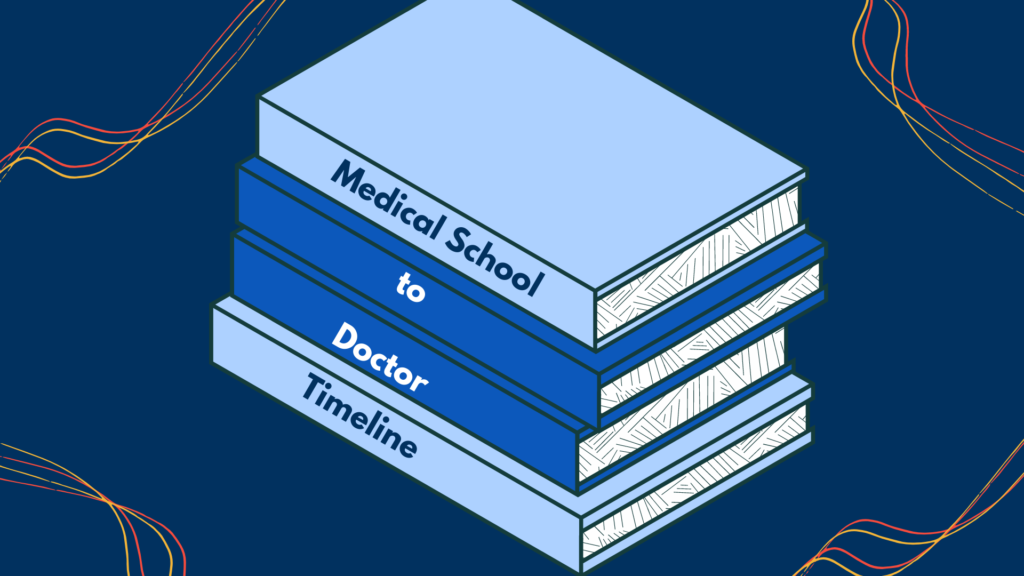The journey from medical school to medical licensure is a long one, taking up to fourteen years to complete. Starting this process with its multiple applications and exams can be daunting and you probably have loads of questions. What is medical school like? How long is medical residency? How many stages are there in this complicated process?
We’ve put together an outline of the necessary steps to make this path a little clearer. This guide goes over everything you need to know about the process of becoming a doctor in Canada and the United States, covering topics on medical school, board exams, residency, and more.
MEDICAL SCHOOL
Schools in Canada and the United States are four-year undergraduate programs. The first two years of your medical education are called the ‘pre-clinical’ years, and are mostly classroom based. At this stage, you’ll develop fundamental scientific and clinical skills that form the foundation of the rest of your medical career.
If you’re studying in the U. S. you’ll write the United States Medical Licensing Exam (USMLE) Step 1at the end of your second year. The exam tests your knowledge of health, disease, and therapy. Students at Canadian medical schools do not have a national exam to write at this stage.
The next two years of your medical school experience are more hands-on with the introduction of clinical rotations in a healthcare setting. You’ll gain experience in various types of medical fields through core rotations in your third year. In your fourth year, you get to choose a single specialty for your rotations.
Following the fourth year, both American and Canadian students have to pass a national exam. In the U.S., students take the USMLE Step 2, which includes a written exam, as well as an assessment of patient interaction.
Canadian students must take the Medical Council of Canada Qualifying Exam (MCCQE) Part 1, an exam composed of a multiple choice section and a short-answer section on clinical decision making. It tests the competence of graduating students in the following fields:
- Internal medicine
- Surgery
- Pediatrics
- Obstetrics and Gynecology
- Psychiatry
- Population Health
If you completed medical school abroad and wish to practice in Canada, you need to complete the Medical Council of Canada Evaluating Examination (MCCEE) – a general assessment of the candidate’s basic medical knowledge in the principal disciplines of medicine – as a prerequisite for the MCCQE.
RESIDENCY
After medical school, your next step is to apply for and complete a residency program. Applicants to Canadian residency programs use the Canadian Resident Matching Service (CaRMS), and applicants to U. S. programs use the Electronic Residency Application Service (ERAS). Both systems use a computer-based algorithm that produces a matching outcome by considering the preferences of candidates and residency programs.
There is no standard length for residency programs as the duration depends on your chosen field. The chart below outlines the length of residency programs for the different specialties:

Residency includes one year of internship, after which U.S. students must take the USMLE Step 3 and Canadian students the MCCQE Part II. Both exams evaluate your ability to practice medicine without supervision. After that, you’ll complete the rest of your residency and go on to be a licensed doctor!
FELLOWSHIP
Completing a residency is the last mandatory stage in becoming a doctor in the U.S. or Canada, so a fellowship is entirely optional. Some doctors choose to complete a fellowship to gain additional experience in their subspeciality. To apply for a fellowship, you need to demonstrate significant skills in your chosen area, and have already completed a residency prior to applying. A fellowship generally takes two years to complete.
Now that you have familiarized yourself with what it takes to become a doctor, your first step is to start planning. Begin familiarizing yourself with the admissions requirements of different medical schools, start accumulating all of the necessary prerequisites, and learn how to put together a stand-out medical school application.
The journey towards medical licensure can be incredibly stressful, but you don’t have to undergo it alone. Our team is ready to support you through every step of this process; from application review and editing to interview training and preparation, we’ve got you covered .
Remember: it’s never too early to start planning your future!

